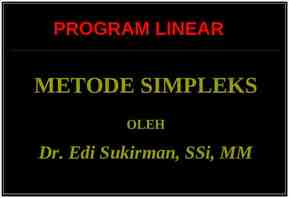Statewide Needs Assessment Data & Implications for Broward
34 Slides637.00 KB

Statewide Needs Assessment Data & Implications for Broward County Barry Nierenberg, PhD, ABPP Deborah Mulligan, MD, FAAP Mary Beth Bailar-Heath, MS Nova Southeastern University

Statewide Needs Assessment Traumatic brain injury in Florida: A needs and resource assessment. WellFlorida, Inc., 2007 Joint project conducted by: Brain Injury Association of Florida (BIAF) and the Florida DOH’s Brain & Spinal Cord Injury Program (BSCIP)

Collected data from 1999-2005 from the State Trauma Registry and the CDC in Atlanta Conducted Focus groups throughout the state with Brain Injury survivors and their families

Findings In 2005 alone, approximately 93,000 TBIs occurred in Florida – Good news is that over 89,000 of these individuals survived the injury.

TBI-related deaths and emergency dept. visits were higher in Florida compared to the national rate, And Florida’s rate for TBI-related hospitalizations is lower than the national rate.

But the bad news is: best estimates show currently there are approximately 370,000 Floridians (or 2 percent of the total population of Floridians) living with long-term disabilities resulting from a TBI.

These sequelae can include: Inability to concentrate Distractibility Impulsivity Short term memory problems Pragmatic language problems Perseveration Frontal Lobe syndrome Emotional Lability

Projected future trends of TBI in Florida: Extrapolating from prior years and incorporating national data, it is estimated that by 2015, the number of survivors living with a TBI-related disability will increase by 21% (435,350 people).

How these trends will affect the population of Broward County BSCIP divides Florida into 5 regions. Region 4 consists of the following counties: Broward, Charlotte, Collier, Glades, Hendry, Indian River, Lee, Martin, Okeechobee, Palm Beach, and St. Lucie

In 2005, the greatest number of TBIs occurred in Region 4 (26,887). From 1999 to 2005, Region 4 experienced the most TBI-related hospitalizations in the state (4,177).

The greatest number of individuals with TBI-related disabilities lives in Region 4 compared to the other regions in the state 95,997 individuals, 26% of total survivors.

However, at present, Region 4 contains only 20.6 percent of the TBI-related resources in the state.

Region 4 is expecting the largest increase in population of all the regions. This region would need to increase service capacity by an estimated 24 TBI-related resources to maintain the current service capacity.

However, the current service capacity is already inadequate to meet the demand; thus even more than 24 resources are needed to provide adequate services.

Implications for the provision of services in Broward County to serve the needs of TBI survivors

The problem Within Broward County, the number of individuals with TBI is increasing, as well as the number of those living with TBI-related disability

Not enough TBI resources at the current time and with the growing incidence/prevalence, Broward County will need more resources just to maintain current service capacity

Focus groups revealed that individuals with TBI in Florida are reporting many unmet needs following discharge from hospitals

These include, but are not limited to, problems with: Community re-entry Vocational difficulties School re-entry Social relationships

State Needs Analysis: Conclusion The current system of care supporting TBI survivors across Florida is limited, inconsistent, and does not support transitions.

Need to develop transition-based care, and develop network of transition-based referral resources.

This would include: Developing a system for biopsychosocial support for survivors and family from the inception of TBI treatment onward, including the development of neurobehavioral system of care. Developing mechanisms to identify and continuously update existing resources.

Possible solution(s) Numerous studies and clinical experience since WW II demonstrate that optimal recovery for those with TBI occurs as a result of multidisciplinary care and interventions

Patients benefit from: Close proximity and linking of services, Communication between service providers, Collaborative care

Additional Inpatient and Outpatient rehabilitation programs are necessary in Broward County to provide additional needed short and long-term, multidisciplinary services

Components of Rehab Team Need Rehab trained: Physicians Nurses Physical Therapists, Occupational Therapists, Speech Therapists, Psychologists Neuropsychologists

Many of these are available through training programs in area Universities and Colleges.

Possible referral and funding sources Referrals from trauma centers and VA’s Referrals from BSCIP Case Managers IF program is a BSCIP designated facility Bundled package of comprehensive services Possible funding from BSCIP Trust Fund Possible training site for medical and graduate students Possible research grants

Brain and Spinal Cord Injury Program (BSCIP) Mission – to provide all eligible Florida residents who sustain a moderate to severe Traumatic Brain or Spinal Cord Injury the opporetunity to obtain the necessary services enabling them to return to their community Begun in 1978 as an attempt by Florida’s DVR to ensure the well being of people surviving Brain and Spinal Cord injuries by implementing a system of referrals for appropriate services.

Core Components of Florida’s Legislation Central Registry provides a registration and referral system for persons who have moderate-to-severe brain or spinal cord injuries. Advisory Council provides programmatic oversight. Trust Fund ensures funding for the provision of a coordinated system of care for eligible individuals. Brain and Spinal Cord Injury Program provides a coordinated system of care through designated acute, inpatient/outpatient rehabilitation, and transitional living facilities to enable eligible individuals to return to an appropriate level of functioning within their community and/or to a vocational rehabilitation program.

Brain and Spinal Cord Injury Rehabilitation Trust Fund First established by law: July 6, 1988, Chapter 381.79, F.S., The Trust Fund can provide eligible clients who sustained traumatic brain and/or spinal cord injuries essential services to reintegrate them back into the community. Clear reallocation of Public resources to meet needs of people surviving Brain and Spinal Cord Injury

Need accreditation above and beyond JACHO Comission on Accredition of Rehabilitation Facilities (CARF) & State Designation as an appoved Rehabilitation Facility

Questions? Comments?







